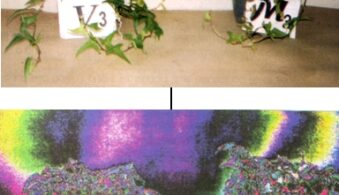Causticum belongs to the Kali family. It is a sycotic remedy. The main feeling in Causticum is that the person is the one who has to take care of the group or family. He is facing the threat from outside and in order to face this threat, he requires that the whole group should fight together.
Being the strongest member of the group, one who is most capable of putting up a fight, he regards a threat to any one member of that group as a threat to himself. If he doesn’t forestall the threat, it will affect the whole group and he will be weakened.
The situation of Causticum is of a family where the husband is dead and the wife has to single-handedly take care of her children. Here she is the strongest member of her group – her family. So, she is very much concerned when there is any problem with any member of the family, for example when a child falls sick or is late in coming home.
The two most important feelings of Causticum are: “Anxious for others” and “Fear that something will happen”. Interestingly Causticum is one of the few remedies listed under “Fear of dogs”.
It can also be the situation of a man who is the only educated member in a group of illiterate workers whom the management is pressurizing unfairly. The whole group has to fight back and if any one worker is threatened, this man takes his side, fights for him, because if he doesn’t and something happens to the worker, the group as a whole is threatened next.
He, being the strongest member of that group, has to take care of the rest of the group, and he becomes very much concerned if anyone is in trouble. His strength lies in the strength of the group and he is the one who looks after it.
Like Causticum, Nitric acid too is very sympathetic and both come from a similar situation. The only difference is that Nitric acid is actually fighting a very hard battle with an enemy. It is not merely fighting unfairness like Causticum, but a long and unforgiving battle against a person who has harmed him. For this battle he requires the support from all his friends. So Nitric acid is very sympathetic to all his supporters. He is sympathetic conditionally. As long as you are his friend, he is sympathetic. Once you offend him he will kill you.
The third remedy listed as sympathetic is Phosphorus and it is the only remedy listed in three marks. There is a kind of selfishness behind the sympathy that both Causticum and Nitric acid feel. They stand to gain by their sympathy, whereas Phosphorus is genuinely sympathetic.
In being sympathetic Causticum is anxious for others, whereas Phosphorus feels the anxiety of others. If the child goes out and is a little late returning home, Causticum will be worried even though the child is enjoying himself. It is not so with Phosphorus. Phosphorus feels the anxiety of the other person, i.e. when the other person is anxious Phosphorus feels it.
Causticum is always anxious for others, always on tenterhooks, always checking where they have gone, when they will return, etc. If they are late, Causticum has to keep pacing up and down.
Both Phosphorus and Causticum are very similar remedies. Both are chilly, both desire cold drinks and are averse to sweets. Also, both may have paralysis of the right side of face. Hence, they are inimical remedies.
Rubrics:
- Anxiety, future, about
- Anxiety, others, for
- Anxiety, fear, with
- Cares, worries, full of, others, about
- Cares, worries, full of, relatives, about
- Fear, dark, of
- Fear, dogs, of
- Fear, ghosts, of
- Fear, happen, something will
- Fear, misfortune, of
- Weeping, easily
- Weeping, sympathy with others, from
If you would like to learn more about Dr. Sankaran’s work, courses and lectures please visit: http://www.onlinehmp.com
To read about the philosophical approach to developing these remedy pictures, see Dr. Sankaran’s introduction to Soul of Remedies:







Practically useful comparison of causticum, nitric acid and phosphorus.. thank u sir
Can I take 5 drops of causticum daily, ongoing?
It is not advisable to do that, as homeopathy is not meant to be used indefinitely; I suggest consultation with a homeopath, https://homeopathyhelpnow.com/
Best wishes!
Is causticum and kali causticum and Natrum Causticum are the same remedies?